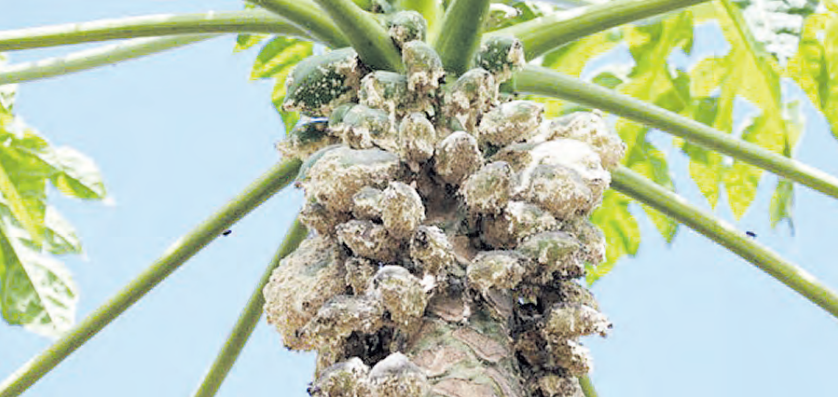
Health benefits of using Papaya leaf
The leaf contains papain and chymopapain, enzymes that aid in breaking down proteins.
Parasitic wasp has proved to be a successful agent against papaya mealybug
In Summary

Audio By Vocalize

A new study has shown the potential
of a biocontrol agent used to fight
the devastating papaya mealybug
pest across East Africa.
Acerophagus papayae is a parasitic wasp that has proved to be a successful agent against papaya mealybug in Africa.
Mealybug is a highly invasive pest that affects at least 133 economically important crops and causes huge losses worldwide.
The tiny insect sucks the sap from fruits. The researchers said the pest is a serious threat to papaya-growing counties.
It originated in Central America and spread to the Caribbean and South America in the 1990s. In Kenya, papaya mealybug was first detected in Mombasa county in 2016.
It poses a big challenge to all 10 papaya-growing counties including Meru, Murang’a, Kitui, Busia and Baringo.
The scientists found areas that were highly suitable for the pest and were also suitable for the biocontrol agent, A. papayae, were highest across West Africa.
While there were areas that were suitable for both species in both East Africa and Central Africa, there were large areas of cropping land that were highly suitable for the pest but not for the A. papayae wasp.
The findings offer timely information on the potential environmental suitability of A. papayae across Africa to help guide decisions on the areas where the biocontrol wasp could be used effectively as part of integrated pest management.
Ivan Rwomushana, a co-author of the research, said, “Whilst results from our study can give an indication of areas which may be suitable for A. papayae, it is important to note that environmental suitability is not the only factor affecting the survival of populations of A. papayae and their utility as a biocontrol agent. One major factor is the population density of the host species.
“This is specifically important for A. papayae as there are no other known host mealybugs for this parasitoid, so populations would be completely dependent on P. marginatus, and thus areas where the population density of P. marginatus is low might be less suitable for release of A. papayae as a biocontrol agent, even if environmental conditions are favourable.”
Many factors affect the effectiveness of A. papayae at controlling populations of papaya mealybug.
The scientists also say even if A. papayae were to become established in an area, other factors affect how effective it would be at controlling populations of the pest.
In July, the international organisation CABI and partners agreed to step up the fight against the papaya mealybug on more farms in Kenya to help protect livelihoods and food security.
Scientists from CABI’s regional
centre for Africa in Nairobi deployed
A. papayae in Machakos, Makueni,
Embu, Tharaka Nithi and Baringo
counties, where the pest affects
smallholder farmers and causes
significant losses.

The leaf contains papain and chymopapain, enzymes that aid in breaking down proteins.